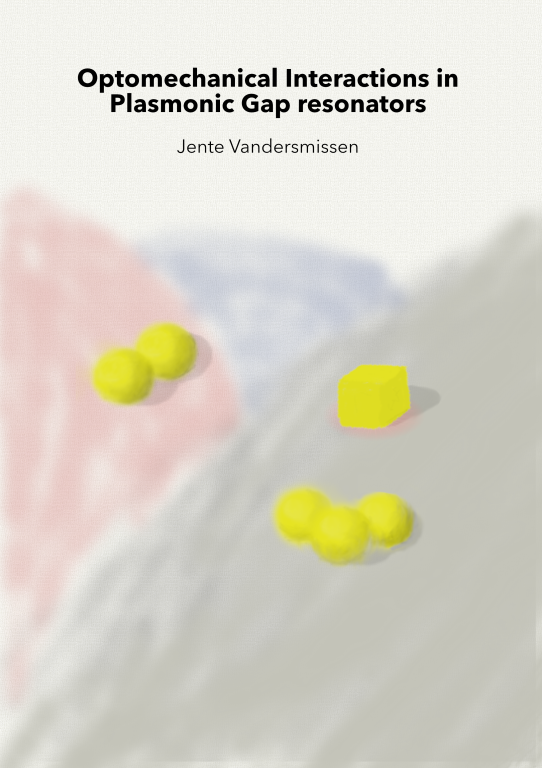Optomechanical Interaction in Plasmonic Gap Resonators
In this thesis, we investigate optomechanical interactions in nanoscale plasmonic architectures. On the one hand, we study the optical readout and actuation of a nanomechanical metallic drum resonators coupled to plasmonic fields. On the other hand, we investigate molecular Raman scattering in novel hybrid photonic-plasmonic resonators that are tunable and sideband-selective.
In chapter 1 of this thesis the concepts underlying plasmonics as well as optomechanics are described. The theory of hybrid resonators, which combine plasmonic and photonic resonators, is introduced. The molecular optomechanics framework is described, which explains surface-enhanced Raman spectroscopy (SERS) in the context of optomechanical interactions.
Chapter 2 reports the techniques used to fabricate the various devices used throughout the thesis. It shows how nanoscale plasmonic mechanical resonators can be fabricated, and outlines the assembly of hybrid resonators. Experimental techniques used to obtain mechanical and Raman spectra are discussed. We propose a concept for a free-space coupled nano-optical mass sensor array, with some preliminary measurements and simulations.
The studies performed on optomechanical interactions in plasmonic nanodrums are outlined in chapter 3. It is shown that in this system, optomechanical interactions are both dissipative and dispersive, with strong optical forces. Thermal motion of the drums is read out through free-space optics and optical driving of the motion is achieved. It is further shown that the actuation of the resonator is mostly due to photothermal forces, which outweigh the radiation pressure forces by a factor 100.
In chapter 4, we explore the possibility to tune the Raman emission rate of molecules in a hybrid cavity, in which a plasmonic resonator nanocube-on-mirror cavity is embedded in a photonic Fabry-Pérot cavity. This cavity has a higher optical Q than plasmonic resonators, with which SERS is customarily performed. The Q is such that sideband-resolved SERS can be realized in this hybrid system. We demonstrate that the emission can be greatly enhanced by tuning the photonic cavity to be resonant with the pump laser line and a chosen Raman emission line, whereas the other Raman emissions are suppressed.
Chapter 5 shows that the results in chapter 4 can be extended to a conglomerate of plasmonic nanoparticles. A spacer layer is introduced to the Fabry-Pérot cavity, upon which the conglomerates, consisting of plasmonic dimers and larger aggregates, are deposited. This enables electric dipoles to efficiently couple to the cavity field. Similar to the results obtained in chapter 4, it is shown that selective enhancement of Raman lines is possible by tuning the cavity to the pump frequency and/or the Raman line.
Finally, in chaper 6, we summarise the findings in this work and provide an outlook.



